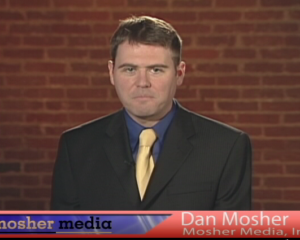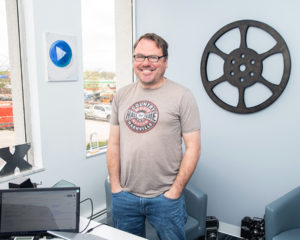Let’s put the disclaimer out there immediately. I am not a CPA and this is certainly by no means legal or tax advice. Consult a lawyer and a CPA, don’t try this at home, objects may be closer than they appear, no animals were harmed and this blog was written by a stunt driver on a closed course. Seriously why would you take business or tax advice from someone who didn’t finish college? Now that the lawyer is happy let’s deal with the CPA, as it’s my favorite time of the fiscal year. It’s time to buy stuff! Years ago, while preparing our corporate tax returns, my CPA asked me if I really needed all the gear I had purchased in December of the previous tax year or if I was just trying to create deductions. While lowering our tax liability is certainly fun I explained that in our business the new lights, lenses and camera technology improves our work and adds more value for our clients. He suggested that in some cases it may be better to just show a profit and pay taxes on it. While I am all for contributing to the cost of keeping this great country going I still get excited over new toys and can absolutely make a business case for the end-of-the-year spending spree. I just wait until I have the picture of how the year will end up so I can decide how much to spend. That’s when the fun begins!
Over the years I have discovered that the process of picking out the gear to be purchased as part of the end-of-the-year shopping spree should be a group activity. I put out an email with a shared spreadsheet we call the “wish-list”. This way everyone can add something that they feel is necessary. We all want tools and gear that helps us improve our work. Certainly we all recognize that new equipment and technology comes out almost daily. Even if we have a general idea of the tools or items we may want doing the research to pick the best brand or model can be time consuming.
There is also some pressure as there have been years where we have been burned. In our camera room there are a few choices I wish we could take back but in our business testing out the new gear is like driving a new car off the lot. It’s hard to return it and it’s value drops immediately. While I have never done this, it is possible to go back to the wish list and see who suggested the gear that didn’t live up to the hype. We don’t go there. Another trend worth discussing is the fact that there are so few companies left who spend on lights and lenses that one might question why we should be doing so. Advances in camera technology have made it possible for individuals to spend a few thousand dollars on camera gear and very little on lights and lenses and still create great video. The market is flooded with filmmakers with a backpack’s worth of gear serving clients who are creating video content on a shoestring budget. If a company spends tens of thousands of dollars on lights, lenses and audio gear are we going to get that money back? Are clients willing to pay a premium for video content that looks and sounds better? How does a production company compete with a videographer by bringing so much gear that a van is required?
It is certainly worth considering that a better use of the capital may be to just buy lots of smaller cameras and have more videographers in the field and less crews. For what we are going to spend on lights and lenses we could probably buy a dozen small DSLR cameras and offer videography instead of video production. Why not? We could sell the van, eliminate the camera room and run the business in a fraction of the space. We’re not going to do that but we have to consider the trends whether we like them or not. Like many operations there is so much more that goes in to this business than taxes and technology. While we need to make sure we have the proper tools for the trade the most important thing to recognize is that the real value comes in the talent of the operator. Video production companies provide value to clients not from the collection of gear but the collective talent of the team. The greatest expense on the net income statement is payroll. Payroll is also completely deductible and at the end of the day is where the greatest investment in our company is made.


